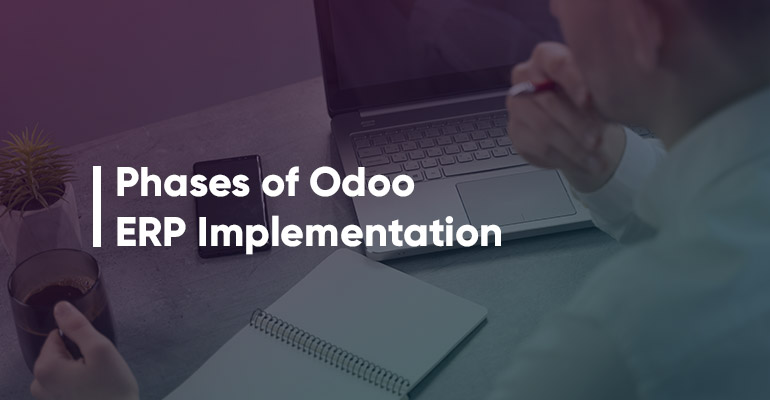
Phases of Odoo ERP implementation
It is very important to implement an Enterprise Resource Planning(ERP) software to achieve the desired company target and earnings no matter in which company you are. Implementation of an Odoo Erp Software for a business is not a simple task. That is a project that typically takes at least a few months and can take several months or longer if the project is larger. It is due to the need to implement, configure, and customize ERP systems for a growing company. Because it is so important to have the correct system, it is vital that the required amount of time is allocated to deliver the finished product.
Although the timeframe for Odoo ERP implementation compared with "out of the box" solutions are fairly long, the process can be divided into several phases. What's more, a dynamic approach will make it more manageable. With a dynamic approach, the different elements of the software could run at the same time in different phases. If the user testing identifies new problems or a need for additional customization, several steps can also be repeated. The Odoo implementation process can be divided into different stages which make it more manageable while the timeline for the implementation of Odoo ERP is long. Keeping that in mind, here are the 8 implementation phases of the Odoo ERP:
Project initiation
The initiation phase of the project is the first and foremost step to implementing Enterprise Resource Planning. In this process, the business client approaches the companies/vendors involved in the Odoo ERP implementation to discuss the project. A thorough conversation is held between the pair, covering grass-root level details such as the market the company belongs to, what their criteria are, what kinds of customizations they are looking for. There is also a comprehensive discussion on the different requirements of the module, and how they try the gain from it. After the comprehensive project ideas are received the implementation company should appoint the best techno-functional expert to successfully carry out the mission.
Gap Analysis
The second phase of Odoo implementation is to carry out an analysis of the gap when the conversation is carried out effectively. Here the recommended techno-functional consultant visits the business unit of the customer to understand in depth the deficiencies while suggesting the best approach for improving the business performance. The consultant is conducting a gap analysis to assess the current business situation, the processes involved, and how to turn the ERP system into the best solution for the current business requirement. Inclusions such as organizational structure, total staff, internal departments employed within, and information flow from location to location would be included in the gap analysis report. In short, the techno-functional consultant ensures he gets the best industry vertical expertise to implement the right business applications.
Software customization
A Business Requirement Document (BRD) is drawn up at the conclusion of the gap review and based on the preparation of the BRD, the Odoo ERP implementation company will create a team of project execution developers and the program customization will begin. The developer team begins configuring the software according to the preset options, then customizing the software with additional features that bring versatility to the job.
Testing
Any software will serve as a test run before it goes online. This helps to consider the faults or any bugs that need to be fixed. The Odoo ERP implementation partner will go for testing to see whether the codes are functioning properly upon the successful customization of the software. This includes testing of the device as well as another internal examination.
Data Migration
Through customer satisfaction testing, the company's individual customers go on a run test of the latest ERP program in accordance with their old software to make sure they get what they want. This helps you understand how effective the implementation of Odoo ERP has been and there are more improvements to be made before the program is implemented to ensure the best performance from the current ERP application.
User Training
After the successful implementation of Odoo ERP, training from the consultant’s side will be given to the customer, helping them understand the workflow of the software. The training can help end-users achieve the best outcomes from the program by using them effectively. The preparation should be performed according to the particular functions, e.g. for advertising, marketing, accounting, etc.
Go Live
The latest software will continue to run in parallel with the old software in the near future. This brings peace of mind to the company owner and helps ensure that there are no issues.
These are the 8 phases of implementation of the Odoo ERP, from project initiation through to migration and going live. As stated earlier, some of these phases can run concurrently in a dynamic strategy, or re-run when errors are found. Combined with a phased model, using a dynamic approach guarantees effective organization, resulting in an excellent ERP program